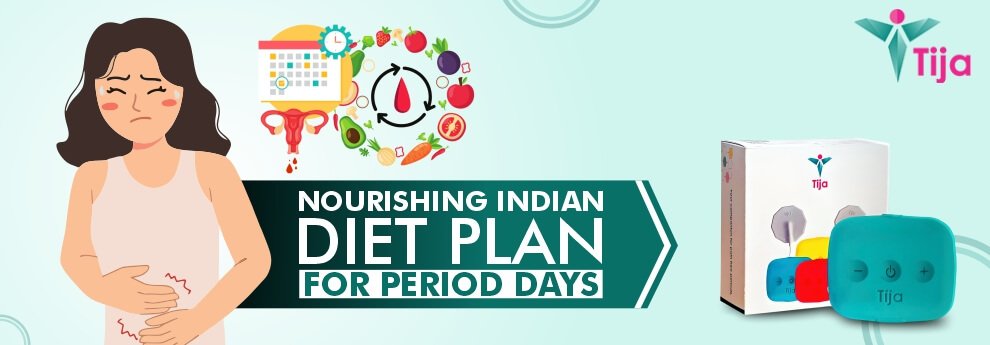During your menstrual cycle, fueling your body with nutritious Indian foods can help alleviate discomfort and support your overall well-being. Let’s explore a diet plan tailored to Indian eating habits, incorporating traditional foods that can help ease symptoms and promote vitality throughout your period.
1. Embrace Whole Grains:
Incorporate whole grains such as brown rice, millet (like ragi and jowar), and whole wheat into your diet. These grains are rich in fiber, which aids in digestion and helps reduce bloating. Start your day with a hearty breakfast of poha (flattened rice) or upma (semolina) cooked with vegetables and spices.
2. Include Protein-Rich Foods:
Opt for protein-rich foods like lentils (dal), chickpeas (chana), beans, and paneer (cottage cheese). Protein helps stabilize blood sugar levels and provides essential nutrients for muscle repair and growth. Enjoy dishes like dal tadka, chana masala, or paneer tikka for a satisfying and nourishing meal.
3. Load Up on Fruits and Vegetables:
Fill your plate with a variety of seasonal fruits and vegetables. Include leafy greens like spinach, fenugreek leaves (methi), and amaranth leaves (lal saag). Enjoy fruits such as bananas, apples, oranges, and papayas. These foods are rich in vitamins, minerals, and antioxidants, which support overall health and immune function.
4. Incorporate Healthy Fats:
Include sources of healthy fats such as nuts, seeds, coconut, and ghee (clarified butter). Healthy fats are essential for hormone production and can help alleviate cravings and promote satiety. Snack on roasted peanuts or almonds, and use coconut oil or ghee for cooking and flavoring dishes.
5. Stay Hydrated:
Drink plenty of water throughout the day to stay hydrated and support optimal bodily functions. Coconut water is a refreshing and hydrating option that also provides electrolytes. Herbal teas like ginger tea, tulsi tea, and fennel tea can provide soothing relief and promote relaxation.
6. Mindful Eating Practices:
Practice mindful eating by listening to your body’s hunger and fullness cues. Eat slowly, savoring each bite, and avoid overeating. Pay attention to how different foods make you feel and make choices that nourish your body and support your well-being.
Sample Meal Plan:
1. Breakfast:
Vegetable uttapam (savory pancake) with coconut chutney
Masala omelette with whole wheat toast and a side of sliced cucumber and tomato
2. Lunch:
Rajma (kidney bean) curry with brown rice or roti
Mixed vegetable sabzi (stir-fry) with bhakri (millet flatbread) or jowar roti
3. Snack:
Sprouts chaat with chopped onions, tomatoes, and lemon juice
Roasted makhana (foxnuts) seasoned with chaat masala
4. Dinner:
Palak paneer (spinach and cottage cheese curry) with whole wheat paratha
Bhindi masala (okra curry) with bajra roti and a side of yogurt
Remember to listen to your body and adjust your diet according to your individual needs and preferences. By nourishing your body with wholesome Indian foods during your menstrual cycle, you can support your overall health and well-being.
Read also: Diet Plan for Period days









